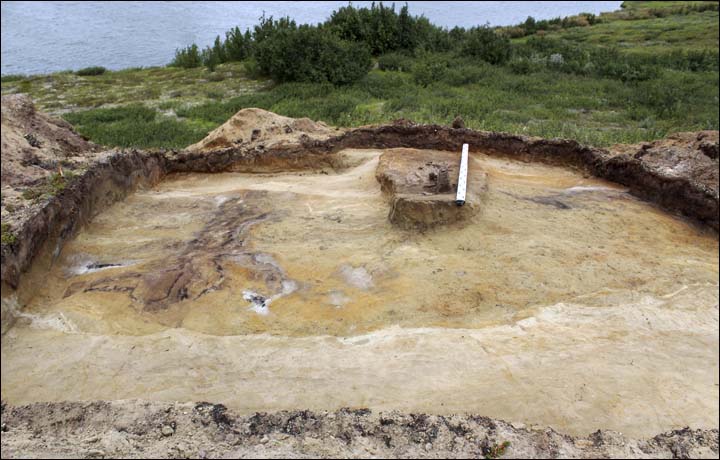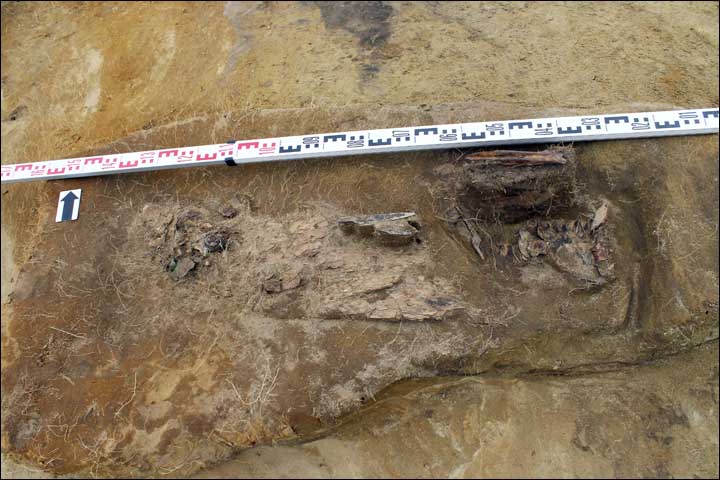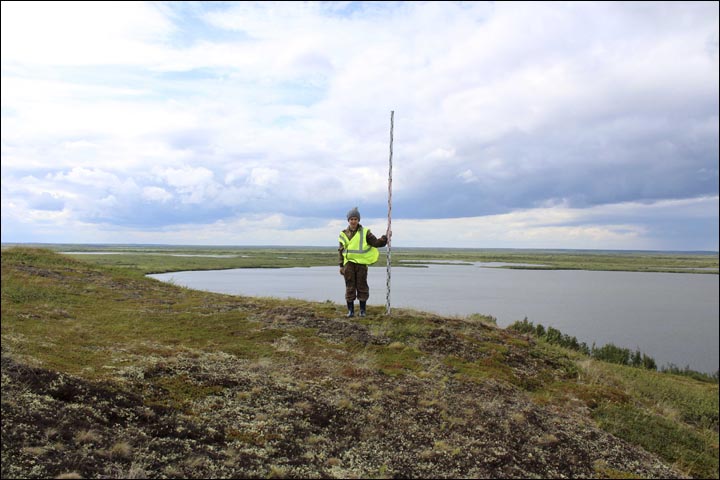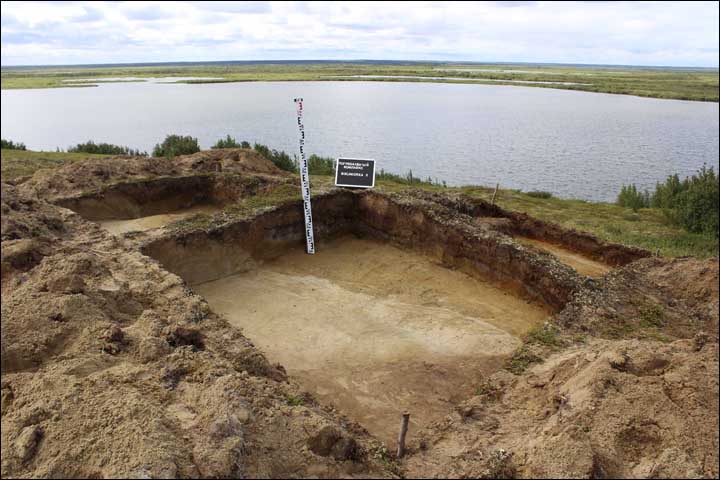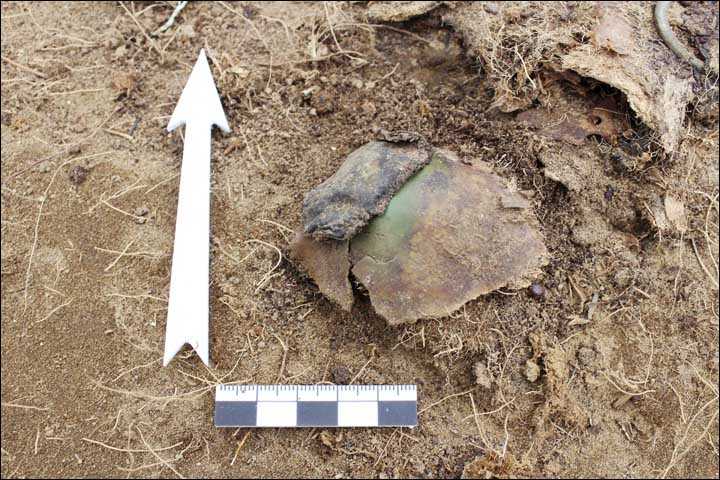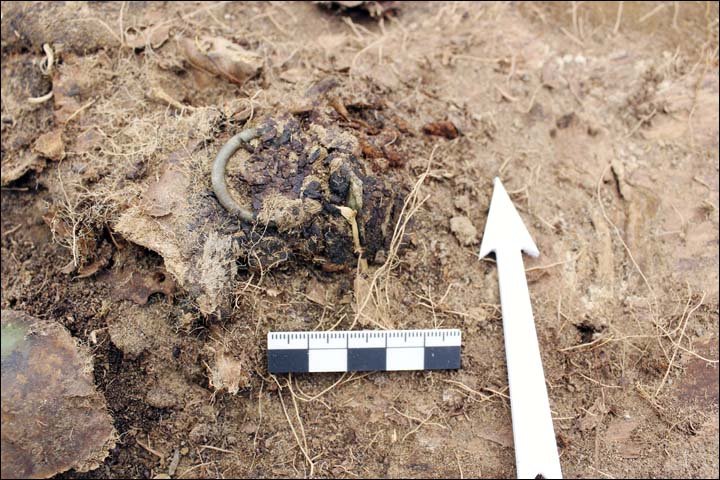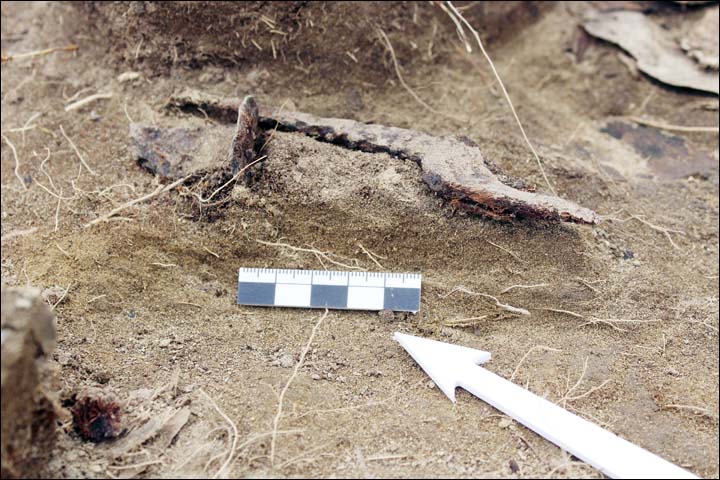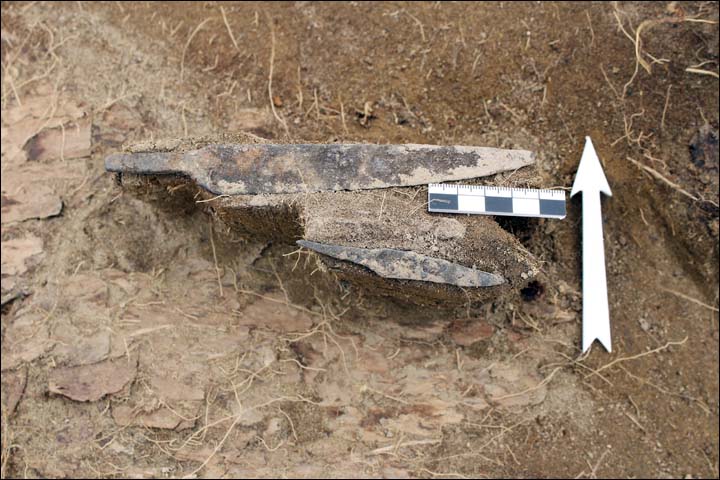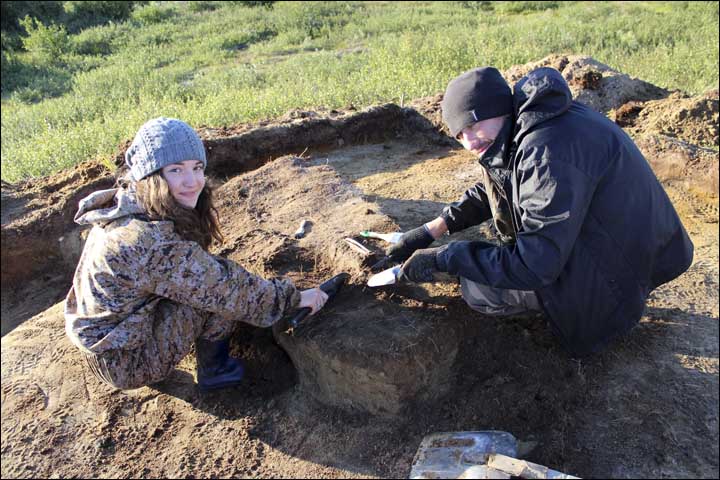Extinct Denisovans from Siberia made stunning jewellery - but did they also discover Australia?
The Siberian Times by Olga Gertcyk
14 September 2017
Time for rethink on capabilities of lost species of ancient man as academics ponder amazing DNA link between today's Aboriginal people and Altai cave dwellers.
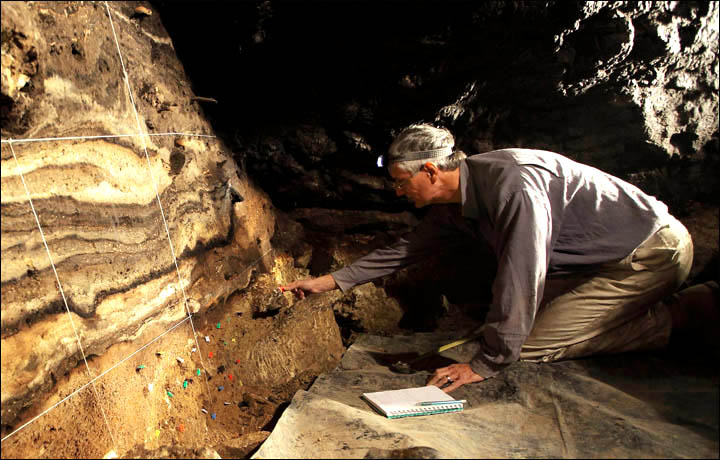
Professor Richard 'Bert' Roberts has urged deep study of ancient migration routes to understand how the Denisovan DNA exists to this day in the native people of Australia. Picture: Richard Roberts
The distance from the only currently known home of the Denisovans in Altai region to the nearest point of Australia is roughly akin to the length of the Trans-Siberian railway, and yet it is looking increasingly likely that these ancient species of humanoids somehow made this epic journey deep in pre-history, perhaps 65,000 years ago.
Separate evidence from the Denisova cave in southern Siberia certainly shows they had myriad talents at least 50,000 years ago, even if their ultimate fate was extinction.
Yet remarkably their DNA lives on in the Aboriginal people of Australia and the Melanesians of Papua New Guinea to a far greater extent than in any other modern-day populations worldwide.
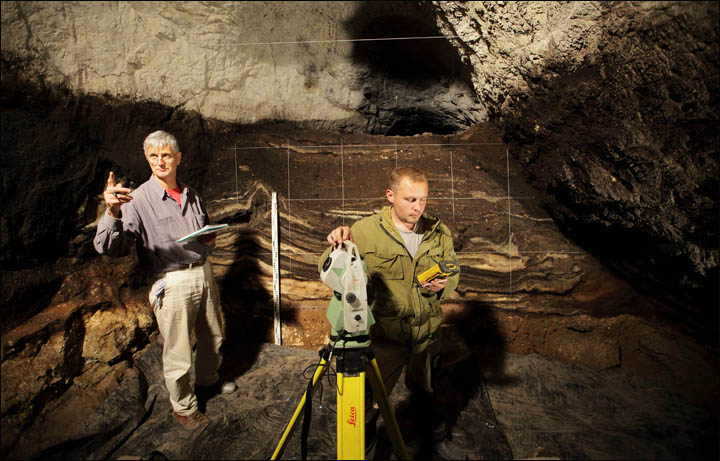
Professor Richard 'Bert' Roberts (left) and Dr Maxim Kozlikin (right) in Denisova cave. Picture: Richard Roberts
Moreover, on their way towards Australasia, they appear to have interbred sufficiently with other early humans to have provided Tibetans with the EPAS1 gene that enables them to survive in high-altitude low oxygen environments.
Pictures shown here illustrate their remarkable Paleolithic handiwork from artifacts - for example a stunning green-hued chlorite bracelet, a marble ring, and beads from an ostrich eggshell necklace, all at least 50,000 years old, but possibly soon to be revealed by scientists as significantly older - found in a cave they shared variously with Neaderthals and Homo sapiens.
Now Professor Richard 'Bert' Roberts, director of the Centre for Archaeological Science at the University of Wollongong, has urged deep study of ancient migration routes to understand how the Denisovan DNA exists to this day in the native people of Australia.
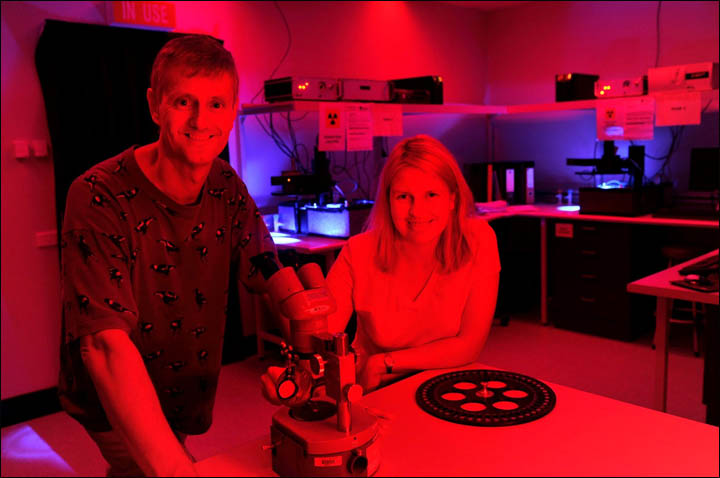
Professor Richard 'Bert' Roberts in his laboratory in the Centre for Archaeological Science at the University of Wollongong. Picture: Richard Roberts
'Many of ancient people's migration routes went through the territory of Russia, via the Altai mountains,' he told gazeta.ru. 'If we don't get to the bottom of what happened regarding human evolution in Altai, we will never understand evolution in say, China.
'The first migration wave of Homo erectus left Africa about two million years ago, moving in two main directions: via the Middle East to the south of Europe, the Caucasus, to the Mediterranean and the Pyrenees, and through the western areas of Asia.
'To the east they most likely moved via two routes as well. One must have gone south of Himalayas and Tibet via Indostan to Eastern and South-Eastern Asia. The other, Northern one, most likely went via Central Asia and Siberia.
'Perhaps two of these streams met at some point. We will learn it by meticulous dating of all finds...
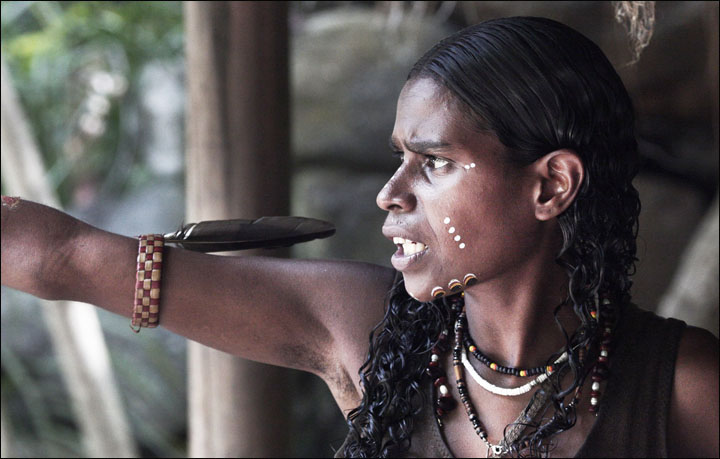

The Denisovans influenced not only Aboriginal people (up), but also modern Tibetans (bottom). Pictures: Steve Evans, Dr. Ruediger Wenzel
'To me personally the most interesting question is how 4% of Denisovan' DNA got into the Aboriginal people? Look where Australia is, and where Altai is! How is it possible?!'
The distance as the crow flies is some 8,500 kilometres, and doubtless any such Denisovan migration happened over multiple generations and many millennia - yet there is also the question of a treacherous sea crossing long before boats or rafts were known to have been invented, even if sea levels then were 110 metres lower than today because of the Ice Age.
People first came to Australia some 65,000 years ago, but who were they, and how did they cross the so-called Wallace's Line separating Asia from Australia, which at the time involved eight separate sea crossings?
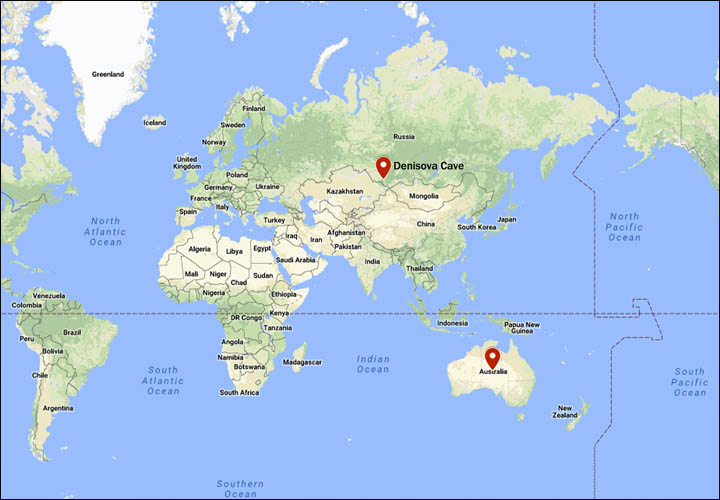
The distance between the Denisova cave and Australia as the crow flies is some 8,500 kilometres. Picture: The Siberian Times
'That's a very interesting and controversial question,' said Prof Roberts, a regular visitor to Russia, whose pioneering dating methods are being used to fix the Denisovans in time.
'We assume they were modern humans, that is members of our species, Homo sapiens, because we have no evidence to the contrary.
'We don't have any fossil remains of the humans, we have only the stone tools left behind, pigments, ochres, all the other attributes that are very typical of what modern humans use whenever they arrive somewhere,' he told the Australian Broadcasting Corporation.
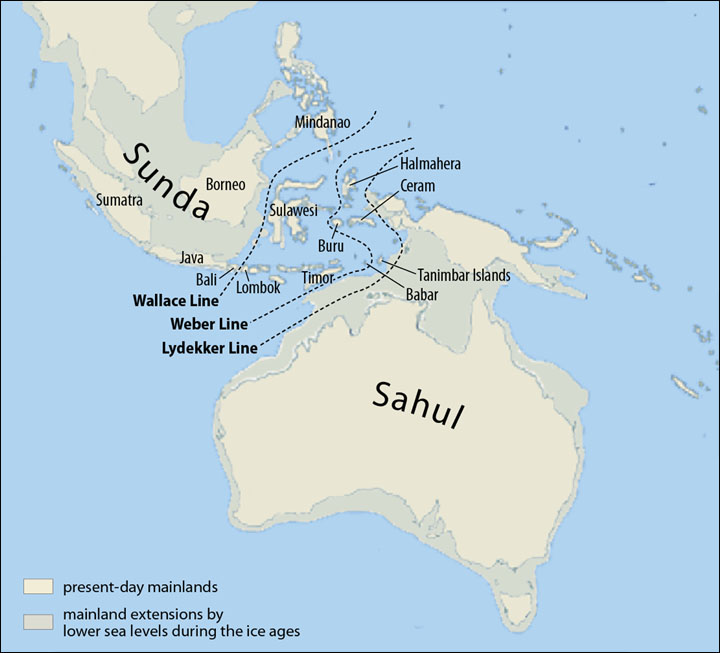
People first came to Australia some 65,000 years ago, but who were they, and how did they cross the so-called Wallace's Line separating Asia from Australia, which at the time involved eight separate sea crossings? Picture: Maximilian Doerrbecker
'And it came with the whole kit and caboodle. All these sites come with the sorts of things we imagine modern humans are using to make all the symbolic things we associate with ourselves.
'But the reality is we don't actually know who were the first people into Australia by species.'
He cannot rule out Denisovans, he said, because of the presence of their DNA in Aboriginal people.
'We know that Aboriginal people in Australia contain both Neanderthal DNA, as do you and I, we have Neanderthal DNA, but neither you nor I have Denisovan DNA, which is another group of people actually the home base, as it were, up in Siberia, Denisova Cave in southern Siberia in Russia.
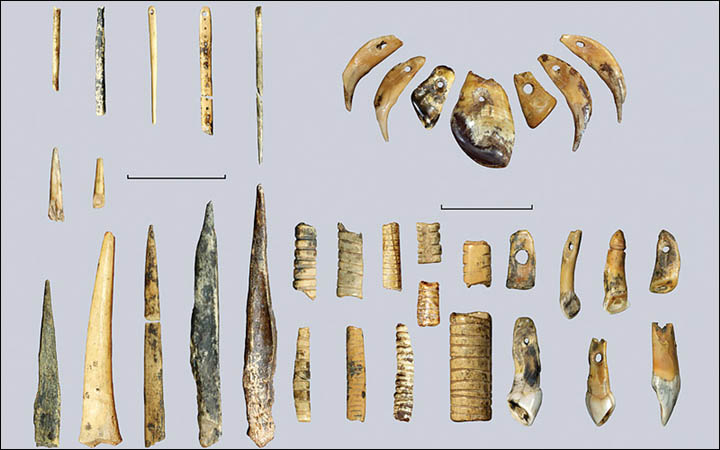
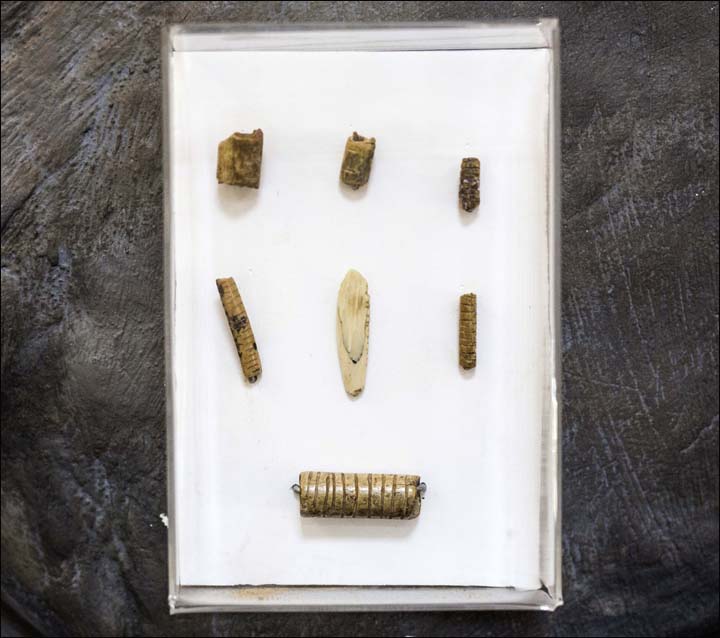
Handiwork made of bones and teeth, find in 11th layer of Denisova cave. Pictures: Anatoly Derevyanko, The Siberian Times
'But it's miraculously in Aboriginal people at the present day in much greater quantities than any other people around the world. How did it get into Aboriginal people?
'That's still very much a moot point and we're not sure.
'Did Denisovan people themselves make it across Wallace's Line, a big biogeographic boundary separating Asia from Australasia? We don't know.
'These are very much still questions that we want to get a handle on, so who were the first people into Australia? We still think it's modern humans but perhaps it might have been Denisovans. It's a question mark still hanging there.'
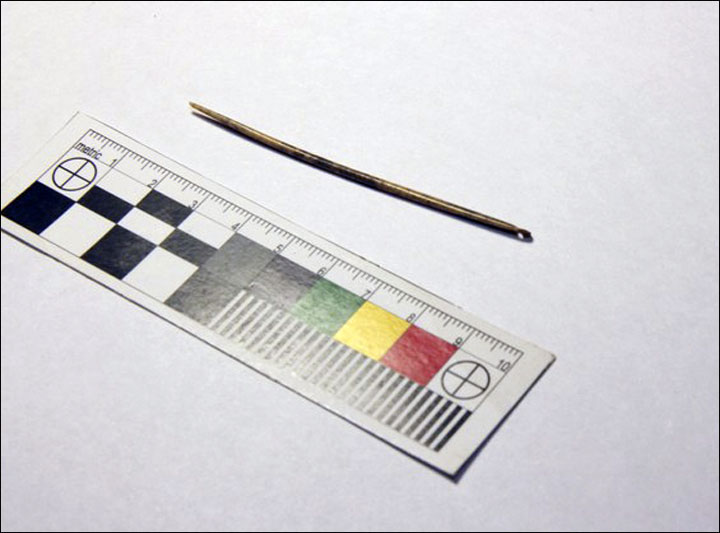
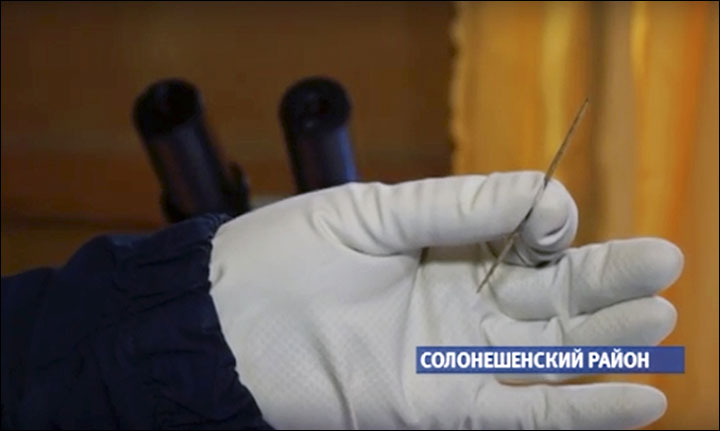
World oldest needle found in Denisova cave. Picture: Mikhail Shunkov, Vesti
Scientists Professor Alan Cooper, of the University of Adelaide in Australia, and Professor Chris Stringer, of the Natural History Museum in the UK, have already suggested in a Science opinion article that this is precisely what happened.
'In mainland Asia, neither ancient human specimens, nor geographically isolated modern Indigenous populations have Denisovan DNA of any note, indicating that there has never been a genetic signal of Denisovan interbreeding in the area,' said Professor Cooper, Director of the University of Adelaide's Australian Centre for Ancient DNA.
'The only place where such a genetic signal exists appears to be in areas east of Wallace's Line and that is where we think interbreeding took place - even though it means that the Denisovans must have somehow made that marine crossing.'
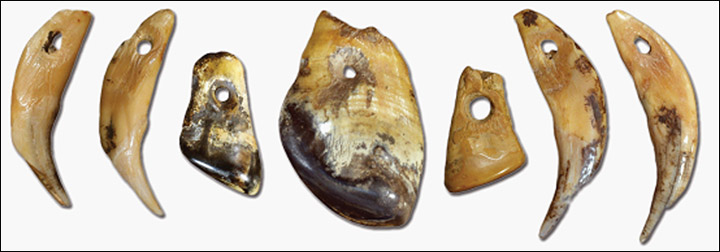
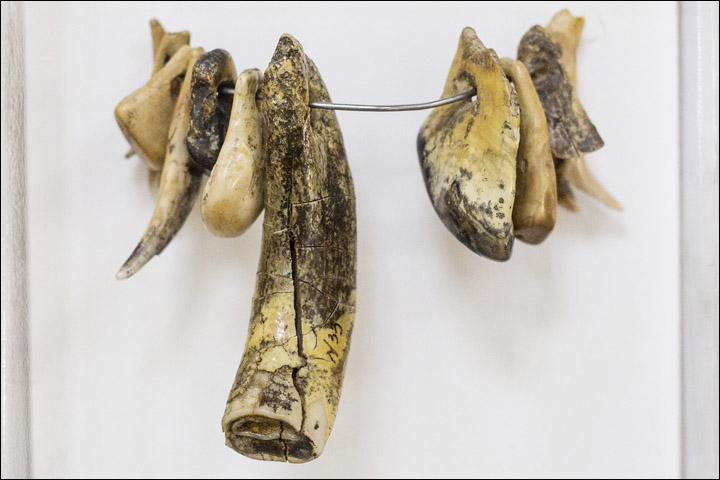
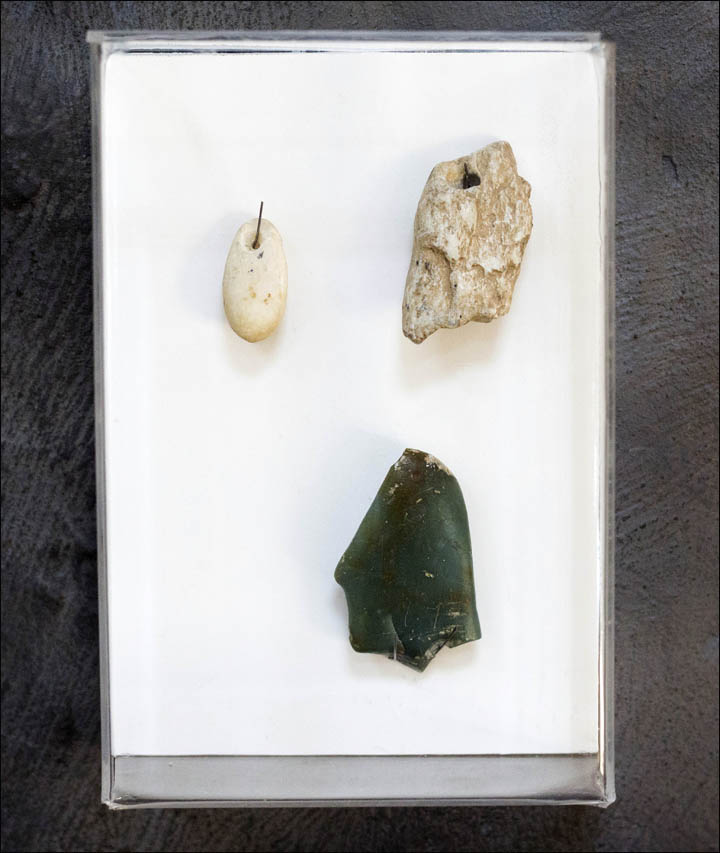
Denisovan necklaces and pendants. Pictures: Mikhail Shunkov, The Siberian Times
Prof Stringer said: 'The recent discovery of another enigmatic ancient human species Homo floresiensis, the so-called Hobbits, in Flores, Indonesia, confirms that the diversity of archaic human relatives in this area was much higher than we'd thought...
'The morphology of the Hobbits shows they are different from the Denisovans, meaning we now have at least two, and potentially more, unexpected groups in the area.
'The conclusions we've drawn are very important for our knowledge of early human evolution and culture. Knowing that the Denisovans spread beyond this significant sea barrier opens up all sorts of questions about the behaviours and capabilities of this group, and how far they could have spread.'
For him 'the key questions now are where and when the ancestors of current humans, who were on their way to colonise New Guinea and Australia around 50,000 years ago, met and interacted with the Denisovans.
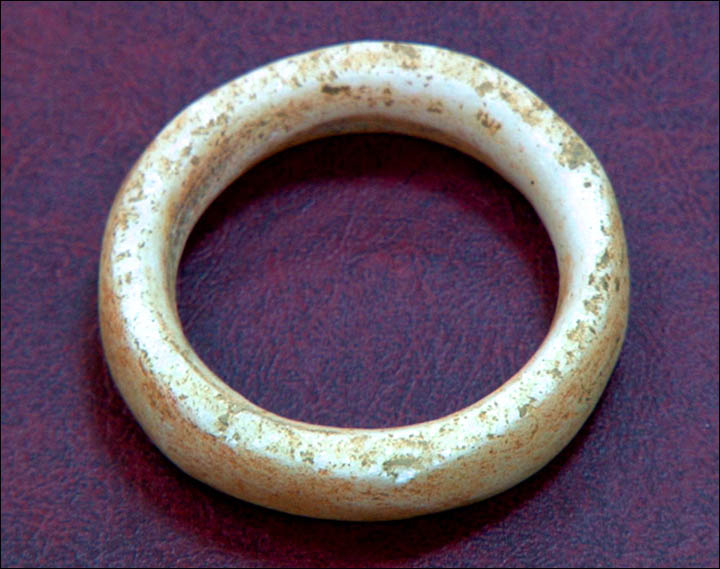
Marble ring found in the cave. Picture: Scientific Russia
'Intriguingly, the genetic data suggest that male Denisovans interbred with modern human females, indicating the potential nature of the interactions as small numbers of modern humans first crossed Wallace's Line and entered Denisovan territory.'
The Denisovans also influenced modern Tibetans, according to Rasmus Nielsen, a faculty member of the Center for Theoretical Evolutionary Genomics, at Berkeley, University of California.
He investigated how Tibetans can withstand the effects of hypoxia in low-oxygen environments. Seven years ago his team published a paper indicating the EPAS1 gene was the cause of this this beneficial mutation.
The gene regulates the body's reaction to low oxygen environments, allowing Tibetans to produce fewer red blood cells and less hemoglobin, it was reported.
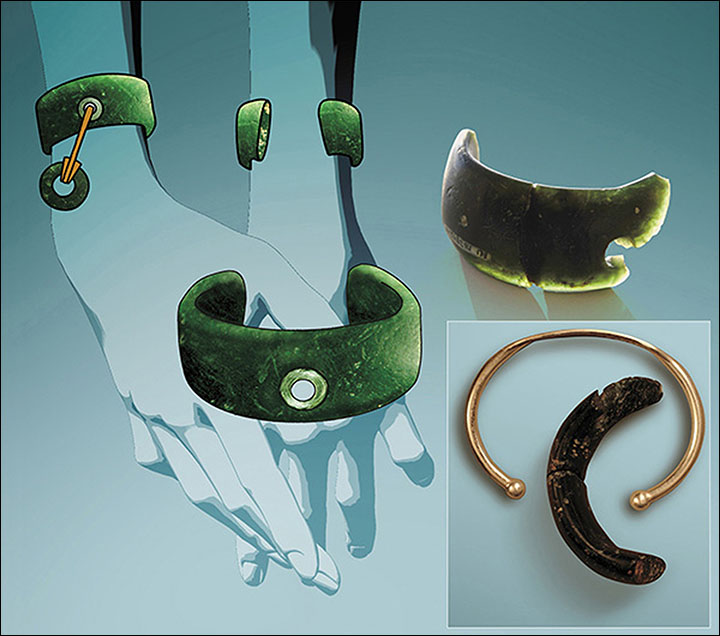
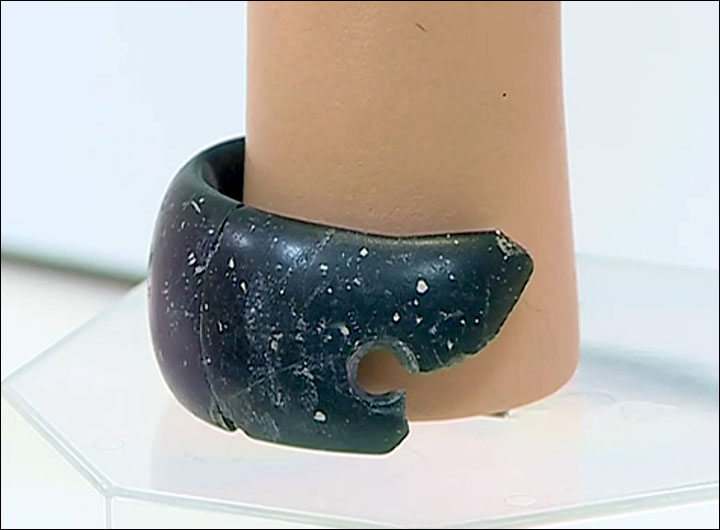
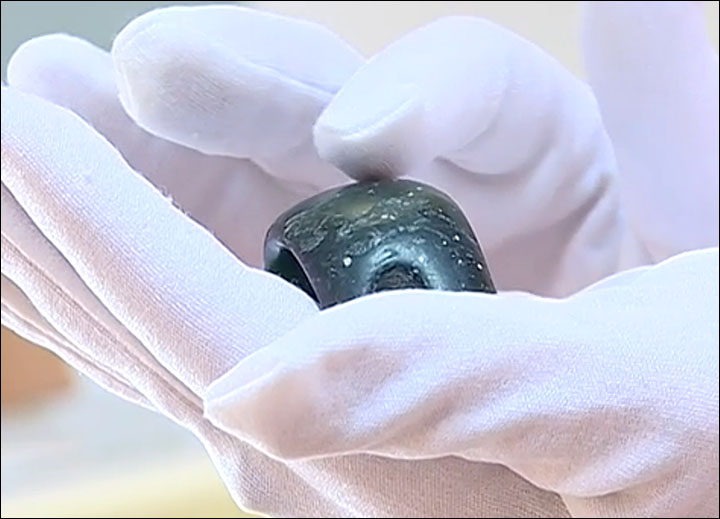
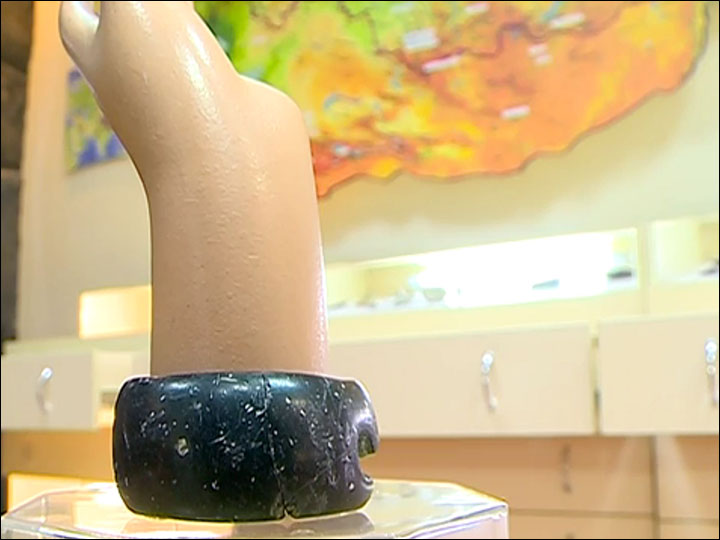
A stunning green-hued chlorite bracelet, found in 2008 in a layer that contained remains of Denisovans. Pictures: Anastasia Abdulmanova, Konstantin Tynayev
Yet it did not originate from Neanderthals but there was an exact match with Denisovans.
Back in Denisova cave, some 150 km km south of the city of Barnaul, finds like the bracelet, a ring, and beads as well as the world's oldest needle, were all made in layers of this underground complex identified as being occupied by Denisovans, after tiny fragments of these archaic humans were found and analysed.
Initially this jewellery and other artifacts was dated as being between 40,000 and 50,000 years old, with the latter currently the officially accepted figure.
Now, however, as previously disclosed by The Siberian Times, scientists from Russia, the UK and Australia are reexamining the dates of these objects amid suspicions that they are as old as 65,000-to-70,000 years.
A stunning discovery by team of Novosibirsk Institute of Archeology and Ethnography. Picture: Anatoly Derevyanko
At 50,000 years the know-how involved in these items - the bracelet has a hole made by drilling and rasping devices - are already breathtaking. Any older, and it challenges our entire understanding of the technological development of man.
Russian scientists say the bracelet was found in 2008 in a layer that contained remains of Denisovans (homo altaiensis) rather than Homo sapiens or Neanderthals, although all these groupings shared the cave at various times, and interbred.
'The bracelet is stunning - in bright sunlight it reflects the sun rays, at night by the fire it casts a deep shade of green,' said Professor Anatoly Derevyanko, former director of the Institute of Archeology and Ethnography, in Novosibirsk.
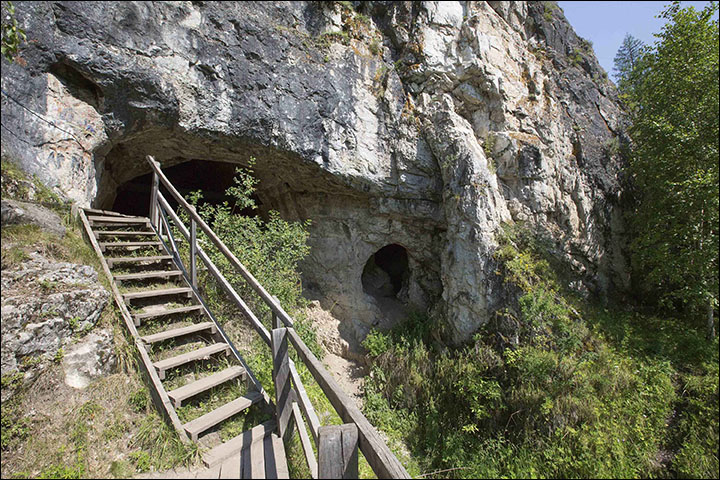
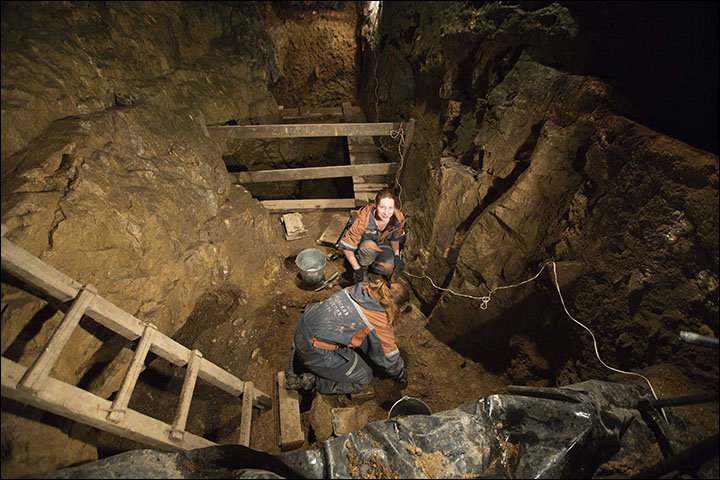
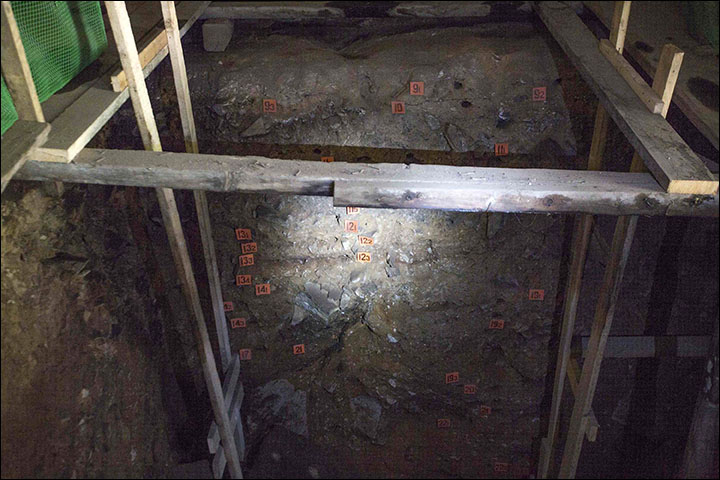
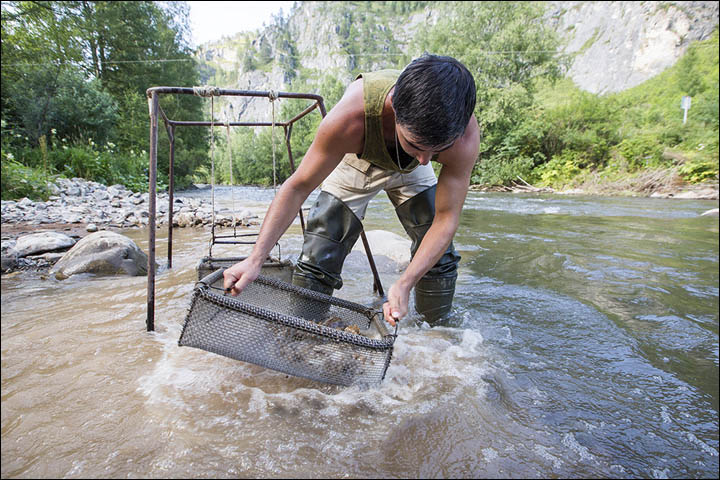
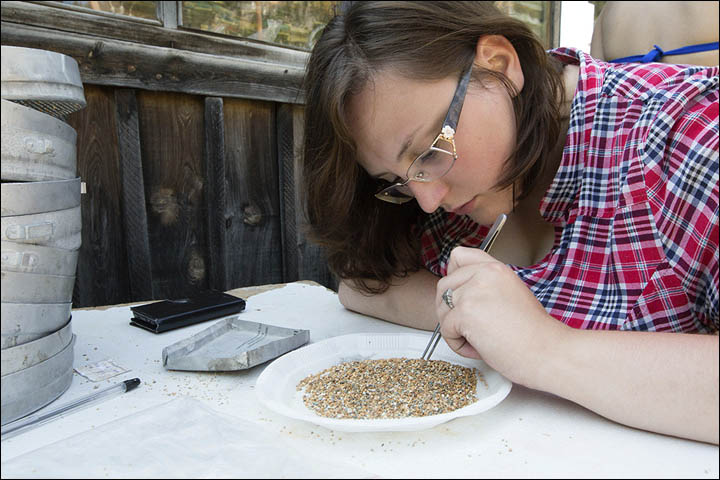
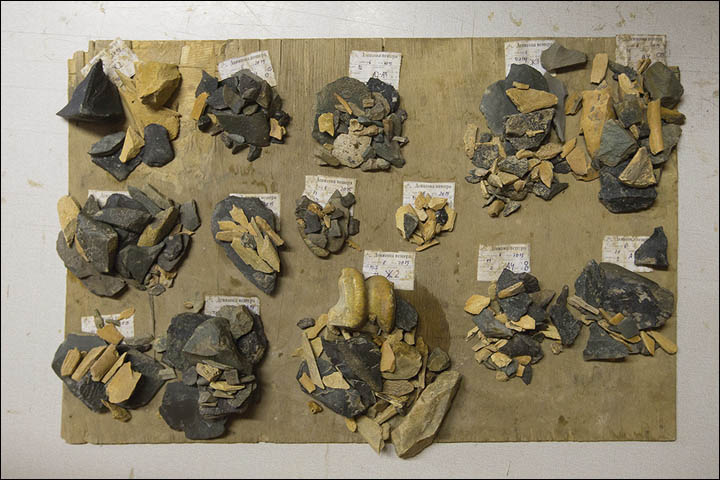
Denisova cave, some 150 km km south of the city of Barnaul, is the only source of Denisovan's remains. Pictures: The Siberian Times
'It is unlikely it was used as an everyday jewellery piece. I believe this beautiful and very fragile bracelet was worn only for some exceptional moments," he said.
The manufacturing technology used in the bracelet is seen as being more typical of a later period, for example the Neolithic era, which began around 12,000 years ago.
His successor Professor Mikhail Shunkov has suggested that the long-extinct Denisovans were significantly more advanced than Homo sapiens and Neanderthals.
Did this technological superiority also help them reach Australia before anyone else?
